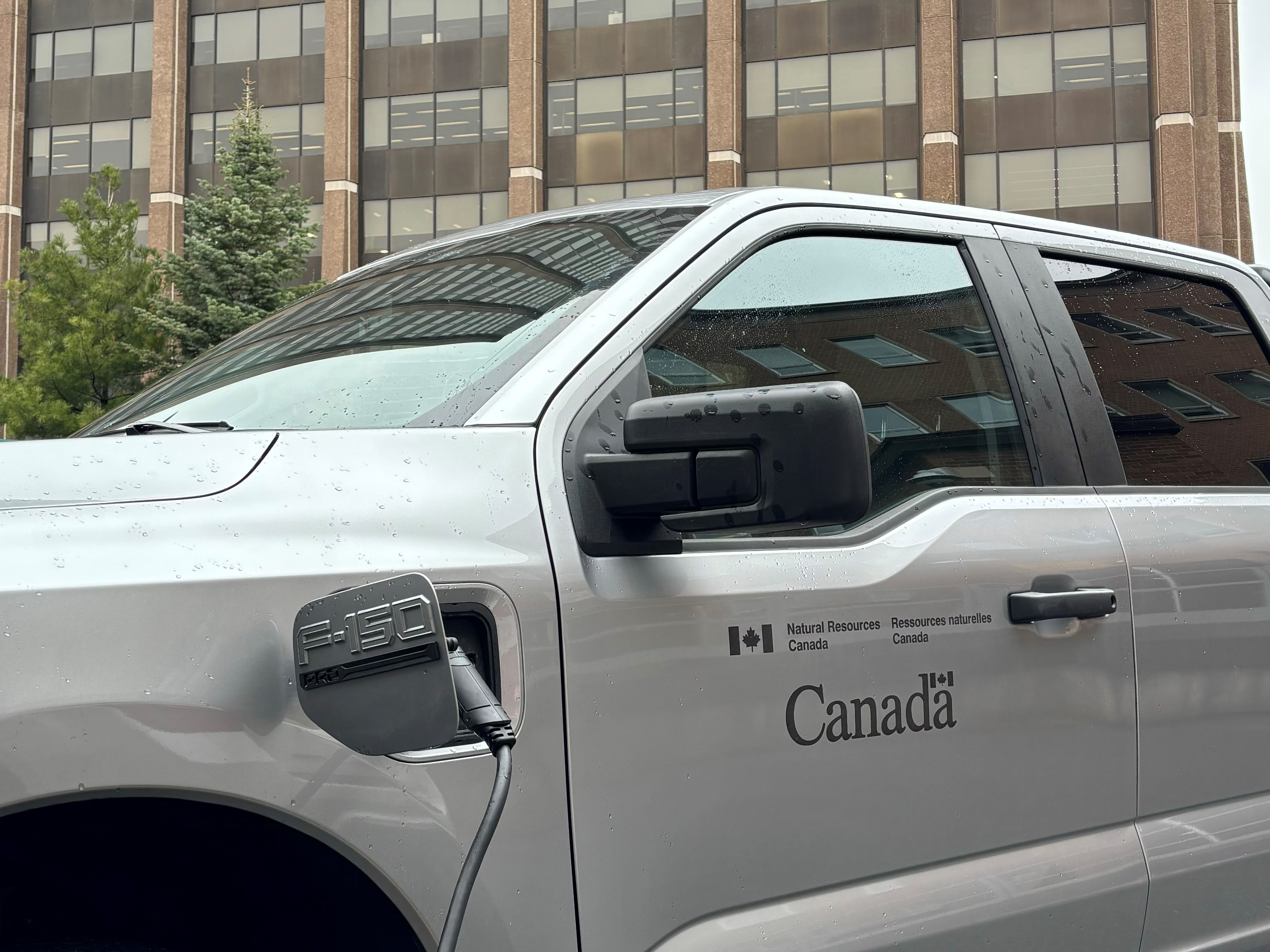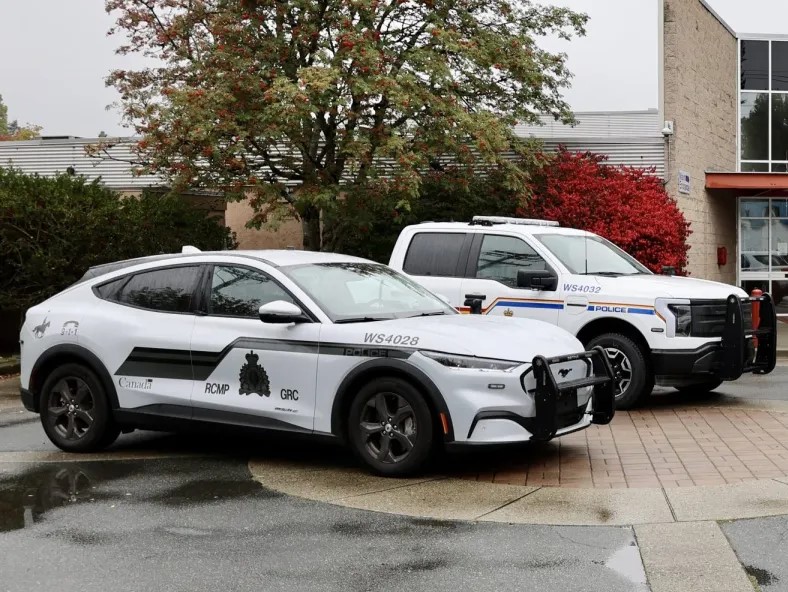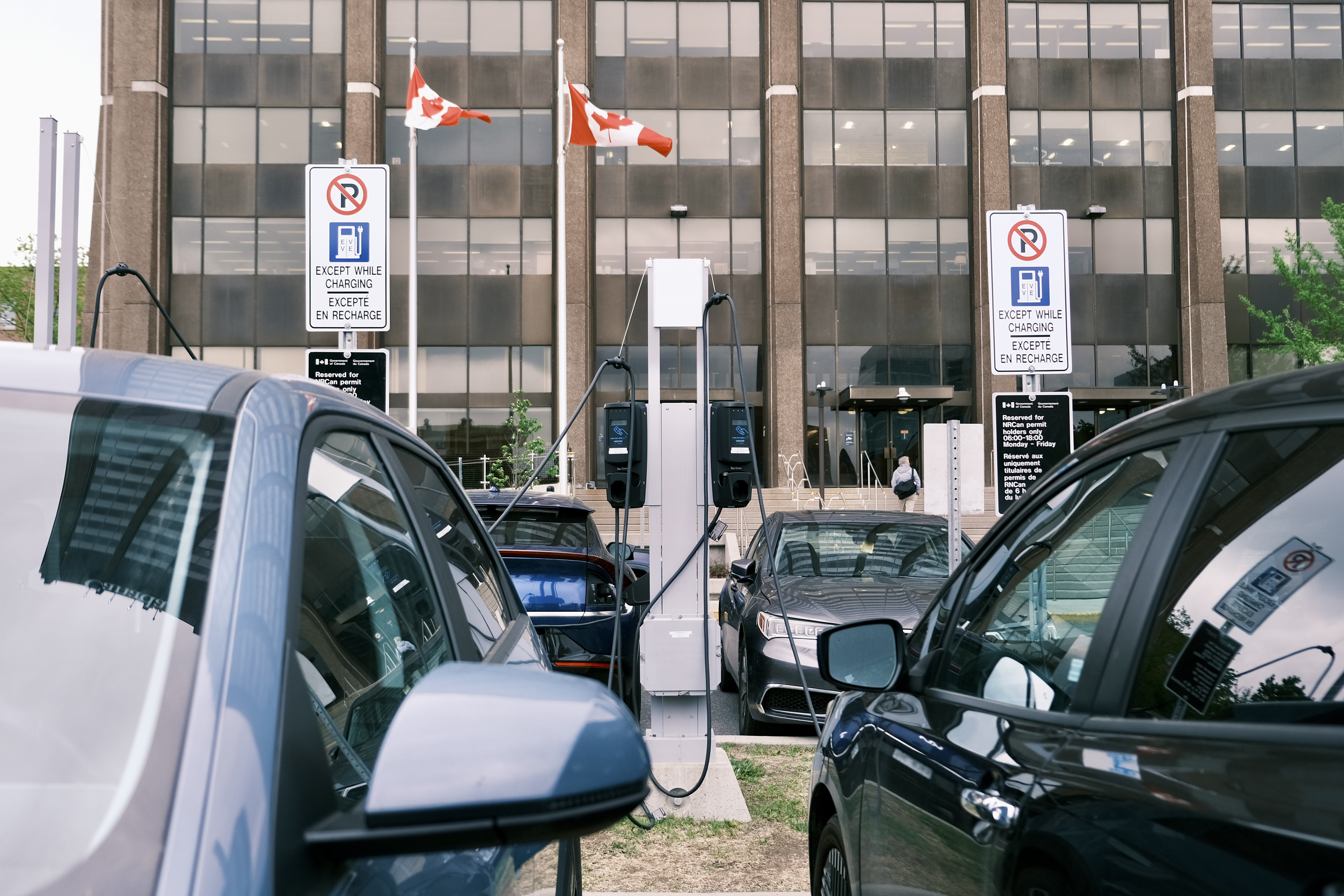

Natural Resources Canada’s Greening Government Operations (GGO) Fleets program helps federal organizations adopt zero-emission vehicles (ZEV) and therefore reduce on-road greenhouse gas (GHG) emissions from federal operations.
In particular, GGO assists departments and agencies in meeting the Greening Government Strategy (GGS) targets by providing technical support for the planning and deployment of ZEVs and charging infrastructure at Government of Canada facilities. The team works with fleet managers across the Government to find strategic and sustainable mobility solutions tailored to their operational needs that are in line with the GGS targets. The GGO Fleets program utilizes a two pronged approach: Fleet telematic assessments and charging infrastructure readiness assessments.
Greening Government Strategy
Consistent with the United Nations’ 2030 Agenda for Sustainable Development and the Federal Sustainable Development Strategy, the GGS sets the Government of Canada on the path to achieve net-zero emissions in its operations by 2050.
The government will adopt low-carbon mobility solutions, deploy supporting infrastructure in its facilities and modernize its fleets.
On-road fleet targets
- The government will prioritize zero-emission options for all new vehicle and mobile equipment purchases, where suitable options are available and considering operational feasibility
- Starting in 2025, 100% of new light-duty fleet vehicle purchases will be ZEVs, with the objective that the government’s light-duty fleet comprises 100% ZEVs by 2030
- By 2030, at least 40% of new commercial medium- and heavy-duty vehicle purchases will be ZEVs
- Fleet management will be optimized to achieve the targets, including by maintaining a long-term strategic fleet greening plan, establishing internal policies and controls to prioritize ZEVs, right-sizing fleets and vehicles, promoting energy-efficient operating practices, and applying telematics to analyze vehicle usage data and inform EV charging needs
- By 2030, the RCMP’s national safety and security light-duty fleet will comprise 50% ZEVs, increasing to 100% ZEVs by 2035
Learn more about the Greening Government Strategy.
Federal fleet snapshot
-
~17,000
Conventional
light-duty vehicles -
~12,800
National safety and
security light-duty vehicles -
~2,600
Conventional medium-
and heavy-duty vehicles -
~7,400
Other
vehiclesFootnote *
Fleet telematics and analysis

To help Government achieve the previously mentioned targets, the GGO Fleets program deploys the following telematic based tools:
Benchmarking: By installing a telematics data logger in their vehicles, fleet managers will gain valuable insight into daily, weekly, monthly, and annual vehicle utilization patterns, allowing them to report fuel use and GHG emissions more accurately.
Fleet right-sizing analysis: By allowing fleet managers to apply customizable vehicle utilization thresholds to their fleet, telematics can help identify underutilized assets and present opportunities for route and duty-cycle optimization.
Zero-emission and low-carbon vehicle suitability assessments: Evidence-based modeling provides fleet managers with recommendations for green vehicle alternatives, including battery-electric, and plug-in hybrids. By using real-world utilization data, the analysis ensures that replacement options are operationally suitable and fiscally responsible.
Infrastructure requirements: The analysis of the fleet’s usage profile and anticipated zero-emission vehicle deployment provides managers with strategic infrastructure recommendations. This information will ensure they choose the optimal number of chargers to support their adoption of plug-in electric vehicles.
Behavioural change: Telematics identify carbon-intensive driving habits such as idling, hard braking and hard acceleration. This knowledge can help fleets implement the necessary behavioural changes to reduce their on-road emissions immediately. Visit our free online ecoDriving course to learn how energy-efficient driving can significantly reduce fleet-related GHG emissions.
If your organization is interested in ecoDriving for employees, federal departments and agencies can request a corporate login account by contacting GGO-Fleets.
Fleet assessment results to date
5,412 Vehicles assessed
Potential annual reduction of 19,214 t of CO2 emissions
Potential annual fuel reduction of 8,247,542 L
Potential total cost of ownership savings of $15,638,899
- Agriculture and Agri-Food Canada
- Canada Border Services Agency
- Canada Space Agency
- Canadian Food Inspection Agency
- Employment and Social Development Canada
- Environment and Climate Change Canada
- Fisheries and Oceans Canada
- Global Affairs Canada
- Health Canada (including Public Health Agency of Canada)
- Immigration, Refugees and Citizenship Canada
- Indigenous Services Canada
- Innovation, Science and Economic Development Canada
- National Defence
- Natural Resources Canada
- Parks Canada
- Royal Canadian Mounted Police
- Transport Canada
Charging infrastructure readiness assessments

Through a comprehensive review of a facility’s existing electrical service, spare capacity, and demand profile, the team’s infrastructure readiness assessments can help fleets plan for the procurement and installation of electric vehicle chargers.
Assessments not only provide information on the number and level of chargers that a facility can accommodate, but they also identify any electrical service upgrades that may be required to support a fleet of plug-in electric vehicles. Vehicle usage data is also incorporated to ensure infrastructure plans are aligned with the fleet's operational requirements.
Site assessment results to date
33 Site assessments
1,610 Implicated fleet vehicles
- Agriculture and Agri-Food Canada
- Courts Administration Service
- Environment and Climate Change Canada
- Fisheries and Oceans Canada
- Health Canada
- National Defence
- Parks Canada
- Royal Canadian Mounted Police
- Transport Canada
Resources
ZEV Fleet Planning Tool
GGO’s Excel-based ZEV Fleet Planning Tool is now available to non-federal organizations! The tool allows fleet managers to track their rolling inventory and make informed light-duty vehicle procurement decisions based on anticipated ZEV availability, on-road emissions, and total cost of ownership. Request this free tool by contacting GGO-Fleets.

Green Fleet Best Practices Guide (PDF, 9.6 MB)
Updated in 2025, this guide provides a roadmap for fleet decarbonization and methods to effectively manage zero-emission fleets of various classes and duty profiles.